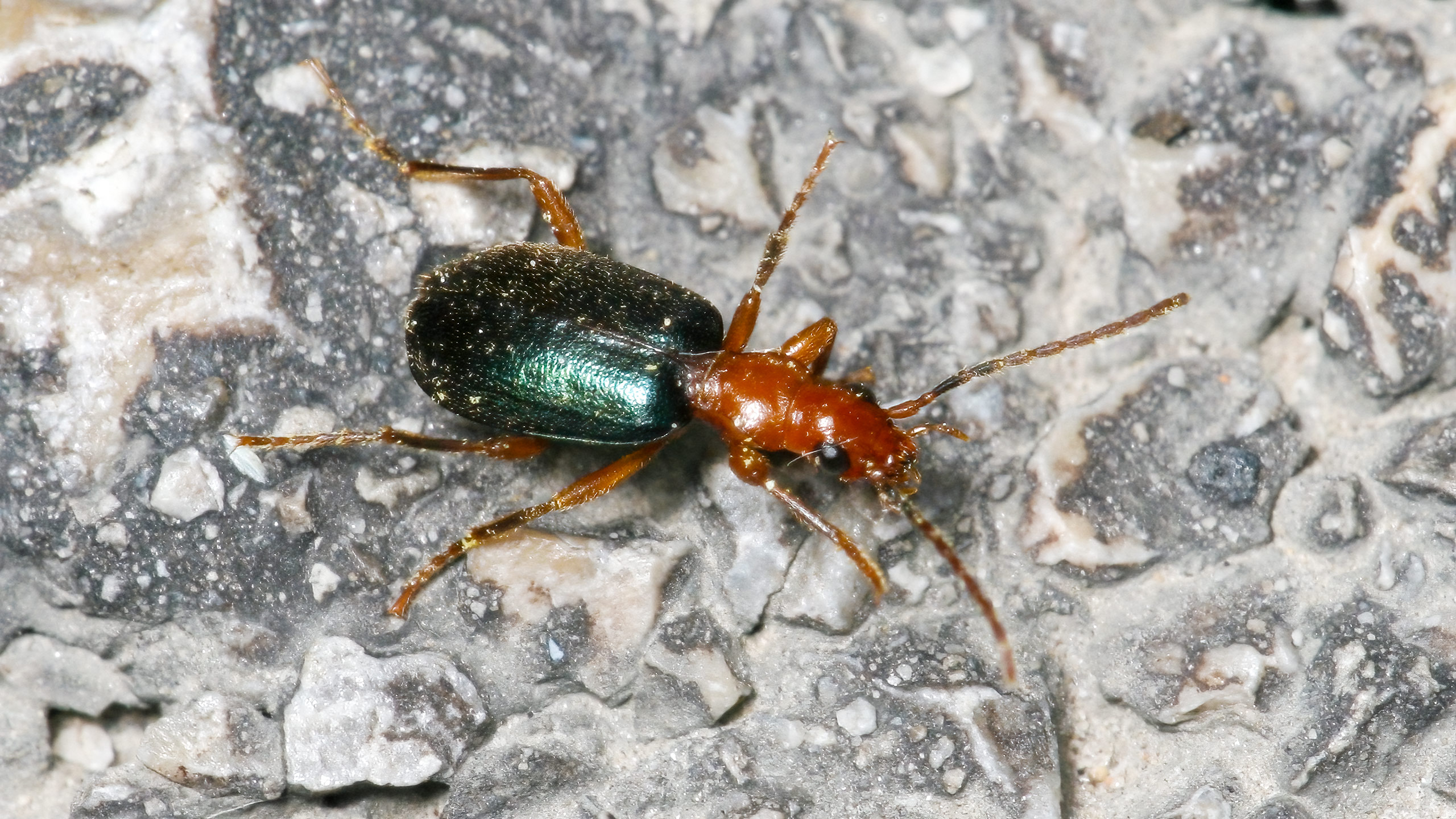Characteristics
The ground beetle Brachinus explodens (Walckenaer, 1830) is a fascinating species from the family of ground beetles (Carabidae). Its most extraordinary feature is the ability to trigger an explosive chemical reaction when threatened. This reaction serves as a defense mechanism against predators and is made possible by a gland in the beetle's abdomen, which release hydroquinone and hydrogen peroxide. These substances are transferred into a specialized explosion chamber, where they react and are heated to over 100 degrees Celsius. The high pressure generated in this chamber causes the beetle to eject the hot, caustic liquid with a loud pop, making it a master of defense in the insect world.
Distribution
These beetles are found in Southern and Central Europe, except for the Alps, as well as in Asia, extending as far east as Siberia. They prefer warm habitats and are commonly found in sparsely vegetated forests, hedges, dry grasslands, and fields, often hiding under stones. Particularly in lowland areas, they can occur in high local densities.
Habitat
Despite its "dangerous" defense mechanism, the beetle poses no threat to humans and is an important part of the ecosystems in which it lives. It feeds on other insects, including pests, making it a valuable species in maintaining ecological balance.

 English (UK)
English (UK)  Dansk (DA)
Dansk (DA)  Deutsch (DE)
Deutsch (DE) 
